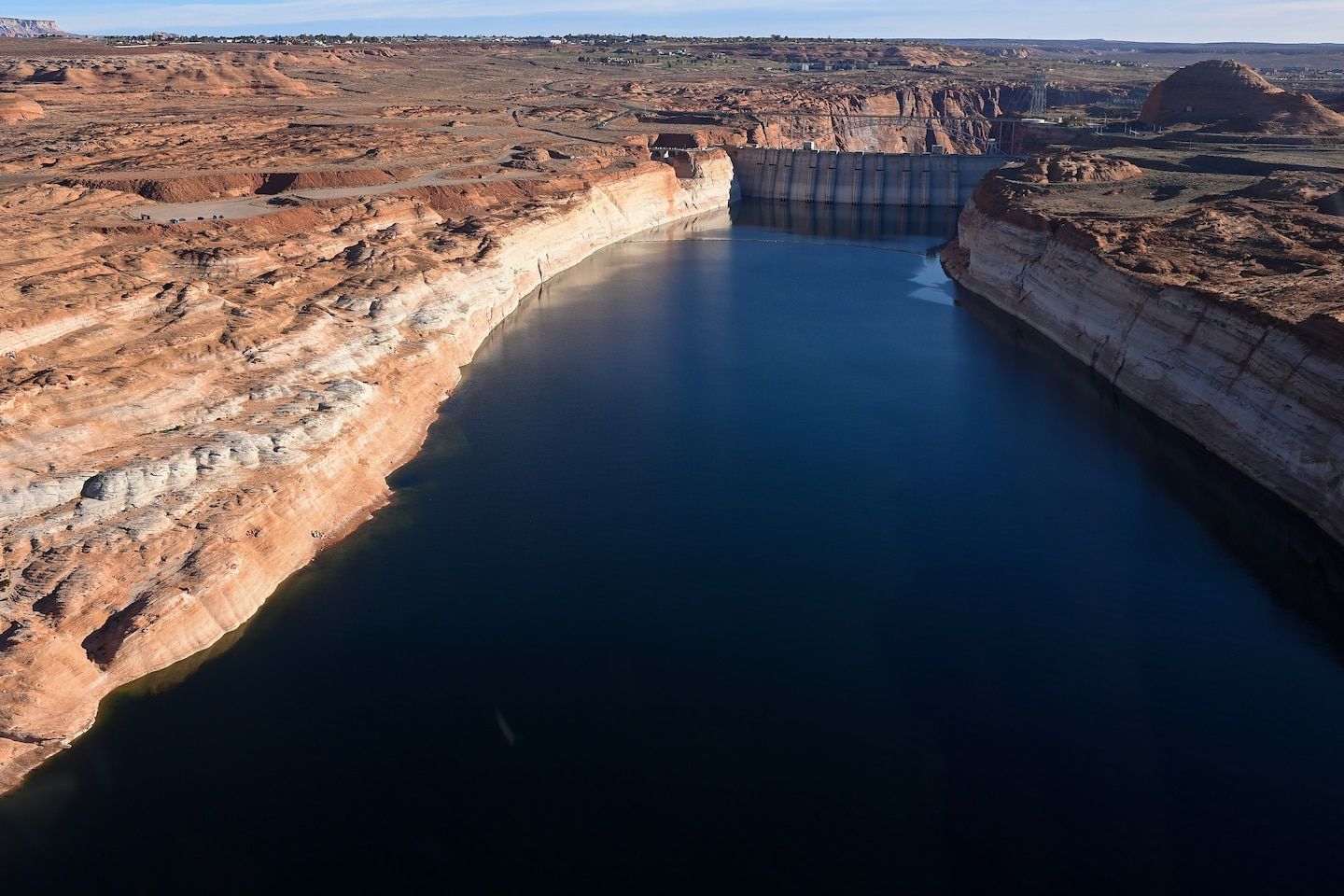What to know about the Colorado River deal and water cuts
Listen 4 min Comment on this story Comment Gift Article Share
After nearly a year of negotiations, three states agreed to conserve an unprecedented amount of their water supply to protect the drought-stricken Colorado River. The deal, shared by state and federal officials on Monday, marks a breakthrough in ongoing efforts to address the crisis. It’s also only a temporary solution.
“It won’t be enough to solve the Colorado River crisis. But it’s a step in the right direction,” said Eric Balken, executive director of Glen Canyon Institute. “We have a supply and demand imbalance. We use more water than flows in the river naturally. So states have to start to use less to come into alignment with the resource that nature is providing. This doesn’t quite get us there. But it’s an important step.”
What is the Colorado River deal?
The Colorado River Basin stretches through seven states — Arizona, California, Nevada, Utah, Colorado, Wyoming and New Mexico — and is a vital source of water and electricity for the American West. It provides hydropower to millions and supplies water to more than 40 million people, including across some of the country’s largest cities, like Los Angeles and Phoenix. The farmlands that rely on it stock the nation’s supermarkets with vegetables in winter.
Advertisement
But the river has been drying up for more than two decades. To stabilize it, California, Arizona and Nevada — the three states that make up the system’s “Lower Basin” — reached an agreement with the Biden administration to conserve 3 million acre-feet of water over the next three years, which is 13 percent of those states’ total allocation from the river. One acre-foot is about 326,000 gallons of water.
In exchange, the Biden administration will compensate the states with about $1.2 billion in federal funds.
How will the deal change water levels in Lake Mead and Lake Powell?
The deal is intended to protect the country’s largest reservoirs — Lake Powell and Lake Mead — from dropping to critical levels over the next three years and ward off the possibility of a “dead pool” scenario, in which the reservoirs fall so low that the river can’t flow out.
Advertisement
The deal should “boost” the reservoirs’ levels until 2026, Balken said.
The biodiversity in the Grand Canyon is dependent on annual buildups of sediment rich sandbars, which have eroded after 20 years of drought. (Video: Erin Patrick O'Connor/The Washington Post)
Who will be affeted?
California, Arizona and Nevada are making the cuts but are still finalizing where the water savings will come from within their states.
California, the largest user of the Colorado River, plans to contribute 1.6 million of the 3 million acre-feet water savings over three years, The Washington Post reported. Nevada pledged to conserve 285,000 acre-feet, and Arizona plans to conserve 1.1 million acre-feet of water.
“This is going to impact a pretty broad set of water users, primarily in the lower basin, so this could be farmers, agriculture, tribes, it could affect cities,” Balken said. “I think it’s a safe bet that agriculture is going to be taking the biggest haircut because they use the most water.”
Preserving the system, however, has benefits that extend far beyond the American West, said Brad Udall, a water and climate scientist at Colorado State University. “It affects everybody in the U.S. who eats winter vegetables.”
How long is it in effect?
The measures stretch until 2026, at which point the states and federal government are planning a major renegotiation of how the Colorado River water is used and shared.
Advertisement
“This agreement isn’t meant to be the lasting solution. This agreement is supposed to get the states to 2026, when the operating agreements of the entire river system will be revisited,” Balken said. “And so really, this agreement is a stopgap.”
How much will the deal cost?
The Biden administration said it will pay the states for three-quarters of the water savings, which amounts to about $1.2 billion in federal funds, The Washington Post reported. Money from the Inflation Reduction Act would pay farmers, Native American tribes, cities and others who voluntarily forgo their supplies.
Is this plan enough?
Until 2026, maybe.
State and federal officials said they are confident that these reductions will be enough to protect the reservoirs until 2026, The Washington Post reported. The deal also comes with emergency provisions if the reservoirs fall too far in the next three years.
Advertisement
Beyond 2026, there is much work to do. The U.S. Bureau of Reclamation, the agency in charge of the nation’s dams, said states needed to stop using 2 million to 4 million acre-feet of water — about one-third of the river’s flow.
“Coming to a solution for the Colorado River crisis is a very big task,” Balken said. “The big picture is that the Colorado River system has a lot less water in it than it used to. And so all of the basin states, we’re all going to have to figure out how to live with less.”
Joshua Partlow contributed to this report.
GiftOutline Gift Article
Source: The Washington Post


